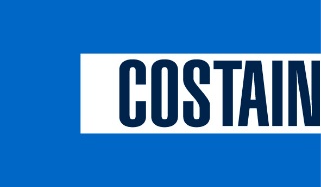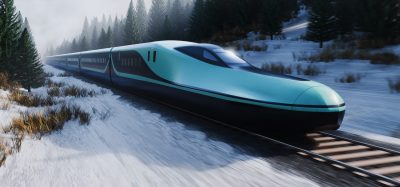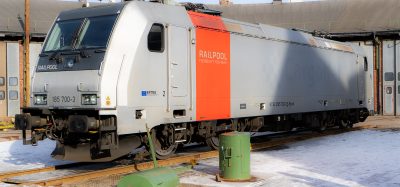Positive progression for the rolling stock market
Posted: 29 December 2006 | | No comments yet
2006 has been a positive year for the Rail Industry – both in terms of development perspectives and recent technological achievements. This feeling was largely reflected at the Innotrans trade fair last September where the Industry presented its state-of-the-art technology, particularly in the Rolling Stock area. The seminar organised jointly by UNIFE and VDB on Rolling Stock technologies showed the latest developments such as the new generation of powered bogies presented by Mr. Gerhard, CTO Siemens Transportation and the modularity of internal & external design presented by Mr Lacôte, CTO Alstom Transport.
2006 has been a positive year for the Rail Industry – both in terms of development perspectives and recent technological achievements. This feeling was largely reflected at the Innotrans trade fair last September where the Industry presented its state-of-the-art technology, particularly in the Rolling Stock area. The seminar organised jointly by UNIFE and VDB on Rolling Stock technologies showed the latest developments such as the new generation of powered bogies presented by Mr. Gerhard, CTO Siemens Transportation and the modularity of internal & external design presented by Mr Lacôte, CTO Alstom Transport.
2006 has been a positive year for the Rail Industry – both in terms of development perspectives and recent technological achievements. This feeling was largely reflected at the Innotrans trade fair last September where the Industry presented its state-of-the-art technology, particularly in the Rolling Stock area. The seminar organised jointly by UNIFE and VDB on Rolling Stock technologies showed the latest developments such as the new generation of powered bogies presented by Mr. Gerhard, CTO Siemens Transportation and the modularity of internal & external design presented by Mr Lacôte, CTO Alstom Transport.
The encouraging trend that the Rail sector is presently enjoying should not hide the mobility challenges our industry has to face. In the European Union, the demand for transport is expected to grow by 40% for passengers and 70% for freight, across all transport modes between 2000 and 2020. Rail is increasingly well placed to offer sustainable solutions for the growing transport demand, because it is the only transport mode with substantial possibilities to increase its service speeds and capacity. Indeed, the rail sector offers competitive transport solutions for both passengers and goods, thanks to an ever growing attention to reliability, efficiency, speed and qualitative aspects of railway services. This applies to both mainline and especially urban transportation. In order to increase this competitive advantage of rail, rolling stock companies’ dedication to R&D and their implementation of innovative technologies is crucial.
Innovation development
Innovation is conceived at two levels:
- Internally driven research programmes like the ones presented at the UNIFE seminar at Innotrans
- Joint research which is of growing importance to meet the European challenge.
Cooperation in pre-competitive research will enable the Rail Industry to tackle common issues and develop a true European internal market, while developing a great potential for exporting these harmonised products to a global market. Company internal and pre-competitive joint research is not exclusive, but to the contrary, they reinforce one another creating real synergies in the field of research.
With this in mind, the stakeholders of the railway sector, including operators, infrastructure managers, manufacturing industries and academia launched in 2001 the European Rail Research Advisory Council (ERRAC). The Strategic Rail Research Agenda that was published by this body in 2002 gave birth to a number of large-scale pan-European projects under the 6th Framework Programme for Research and Technological Development.
The European Commission co-fund (up to 50%) joint research programmes. Rail transport was granted approximately €150 million in the 6th Framework Programme (2000-2006), making our industry the second beneficiary of such funding schemes after the Aeronautics industry. A substantial share of this funding has been used in projects dedicated entirely to rolling stock (such as MODTRAIN, MODBRAKE) or more partially (such as the more recent MODUrban, InteGRail & RailEnergy initiatives).
The MODTRAIN project
MODTRAIN stands for Innovation Modular Vehicle Concepts for an Integrated European Railway System. It is the first and still one of the most important projects which began at the start of 2004. MODTRAIN gathers 37 partners from the industry, operators, railway research centres and universities with a total budget of €30 million (of which €16 million is the EC grant).
This project paves the way to a modular train with a reduction of product variety, inducing cost reduction while increasing competition amongst the suppliers for the benefit of the final customers.
Thanks to close cooperation between the different partners, tangible results have already been achieved. For instance, the industrial mock-up of the driver cabin (EUCAB) and the passenger coach (EUPAX), presented at Innotrans 2006, were developed within MODTRAIN. Other significant results such as Standard Component Specifications or a common Functional Breakdown Structure are to be finalised for the beginning of 2008.
The MODUrban project
Similarly to the MODTRAIN project, the MODUrban project (Modular Urban Guided Rail System project) develops and tests an innovative and open common core system architecture, whose key interfaces will influence the next generation of urban-guided public transport systems. This covers Control Command, the communication system, energy saving and access subsystems).
The InteGRail project
Another key initiative, InteGRail, aims at creating a holistic, coherent information system while integrating major railway sub-systems in order to achieve higher levels of performance of the railway system in terms of capacity, average speed, punctuality, safety and the optimised usage of resources.
All these joint Rolling Stock research projects induce positive spill-over effects on the overall research area and contribute to the reduction of costs which is an important factor to ensure our competitiveness against other modes of transport.
Attracting finance to continue commitment
2007 will boost European Research thanks to the launch of the 7th Framework Programme for Research and Technological Development. This seven year programme (2007 – 2013) is a renewed opportunity to galvanize research on the rolling stock. Up to €4.18 billion will be allocated by the EC to the transport sector (which includes rail, road, waterborne and aeronautics) over the whole duration of the programme. From this amount, our sector could expect to attract a significant part and therefore initiate projects to foster interoperability and reduce LCC. This is an opportunity for rail in general and for the Supply Industry in particular. Our dedication and commitment for research are necessary to face the challenge ahead and tenfold industrial efforts in joining forces across the continent.
2007 – promising steps forward
Competitiveness of the rail sector and the reduction of life cycle costs of the rolling stock will also be achieved by decreasing the homologation cost. Currently, the homologation of the rolling stock is subject to National procedures leading to long and expensive approval procedures for rail equipment in EU Member States that is produced and approved in another EU Member State. With Germany taking over the presidency of the European Union at the beginning of 2007, UNIFE calls for a new impetus so that the European Commission produces as soon as possible a European railway equipment cross acceptance procedure, based on the recommendations of the rail supply industry and railway operators, leading to the creation of a single European market for railway equipment for mainline and freight.
2007 therefore appears promising for the Rolling stock industry, in particular regarding research and improvement in the cross-acceptance areas. UNIFE, as representative of the European Railways Industries, will fully participate in these coming, challenging and promising steps forward!
About the author
Drewin Nieuwenhuis is the General Director of UNIFE which represents the interests of the European railway manufacturing industries in Brussels. He graduated from the National Academy for Transportation Engineering in Tilburg and from the Faculty of Planning Sciences at Utrecht University. Drewin Nieuwenhuis had a professional career in logistics, road freight transport and public and private passenger transport.






